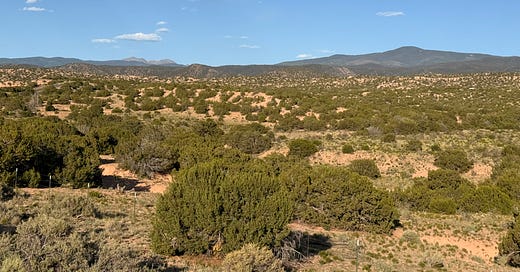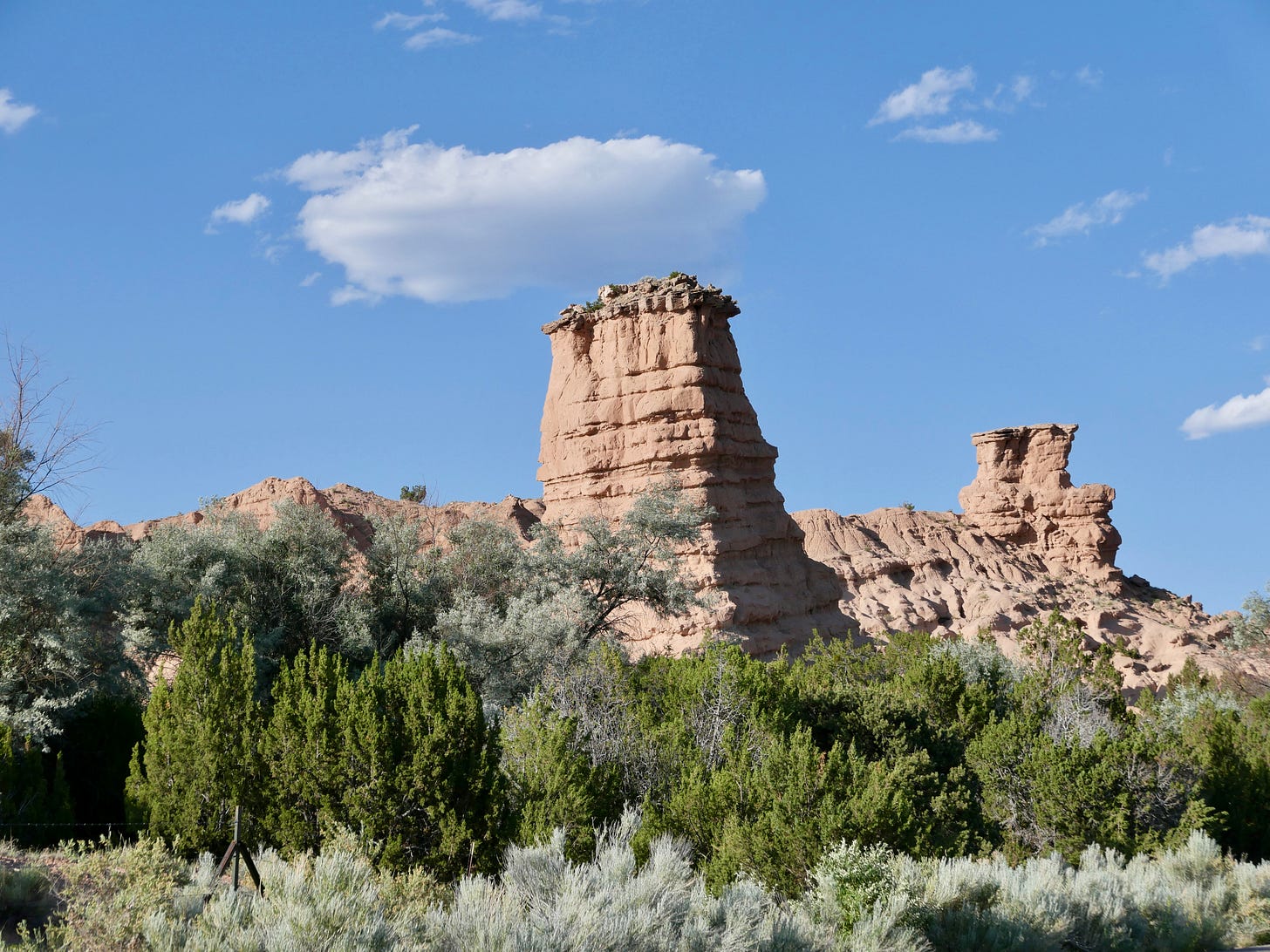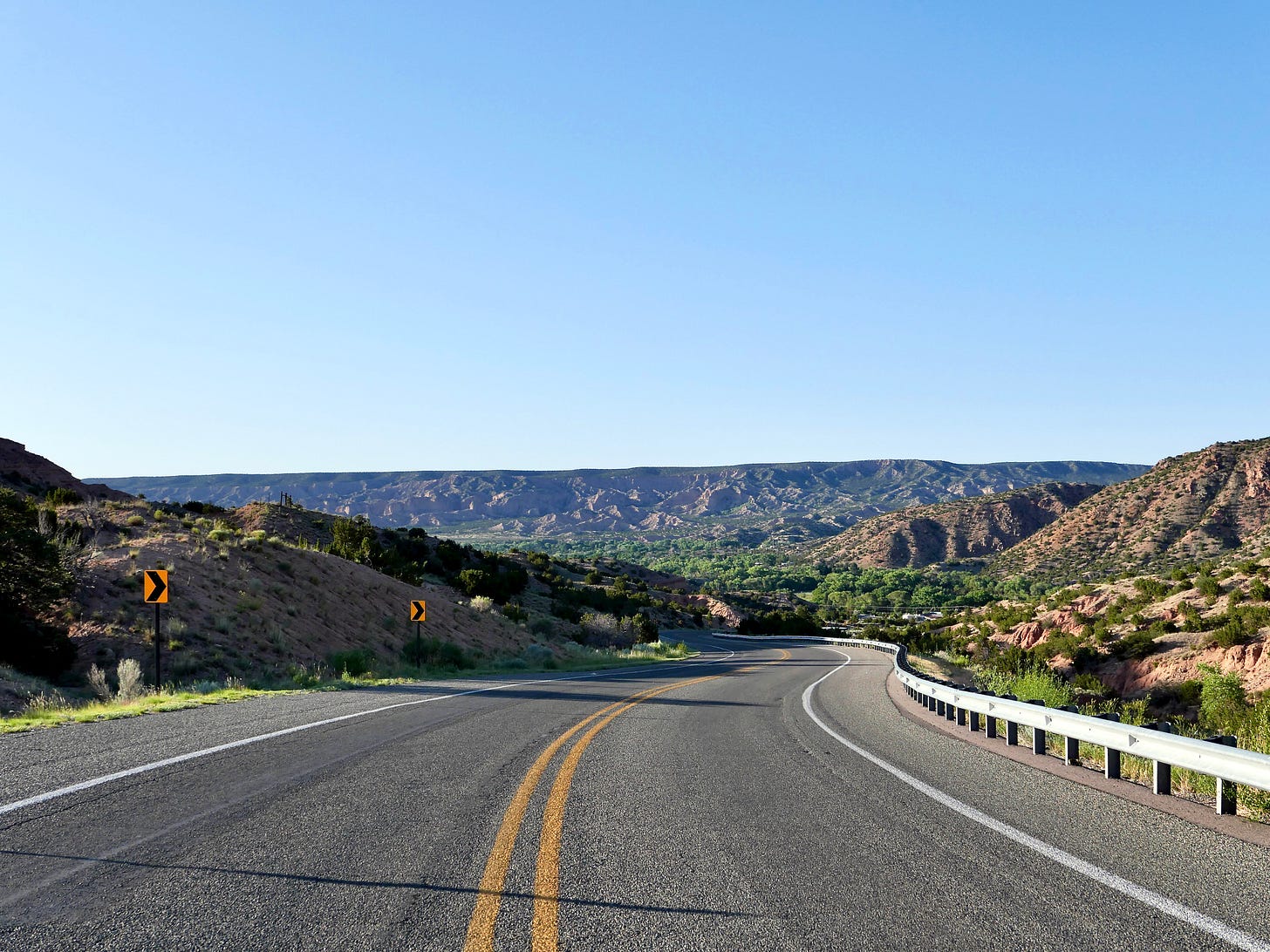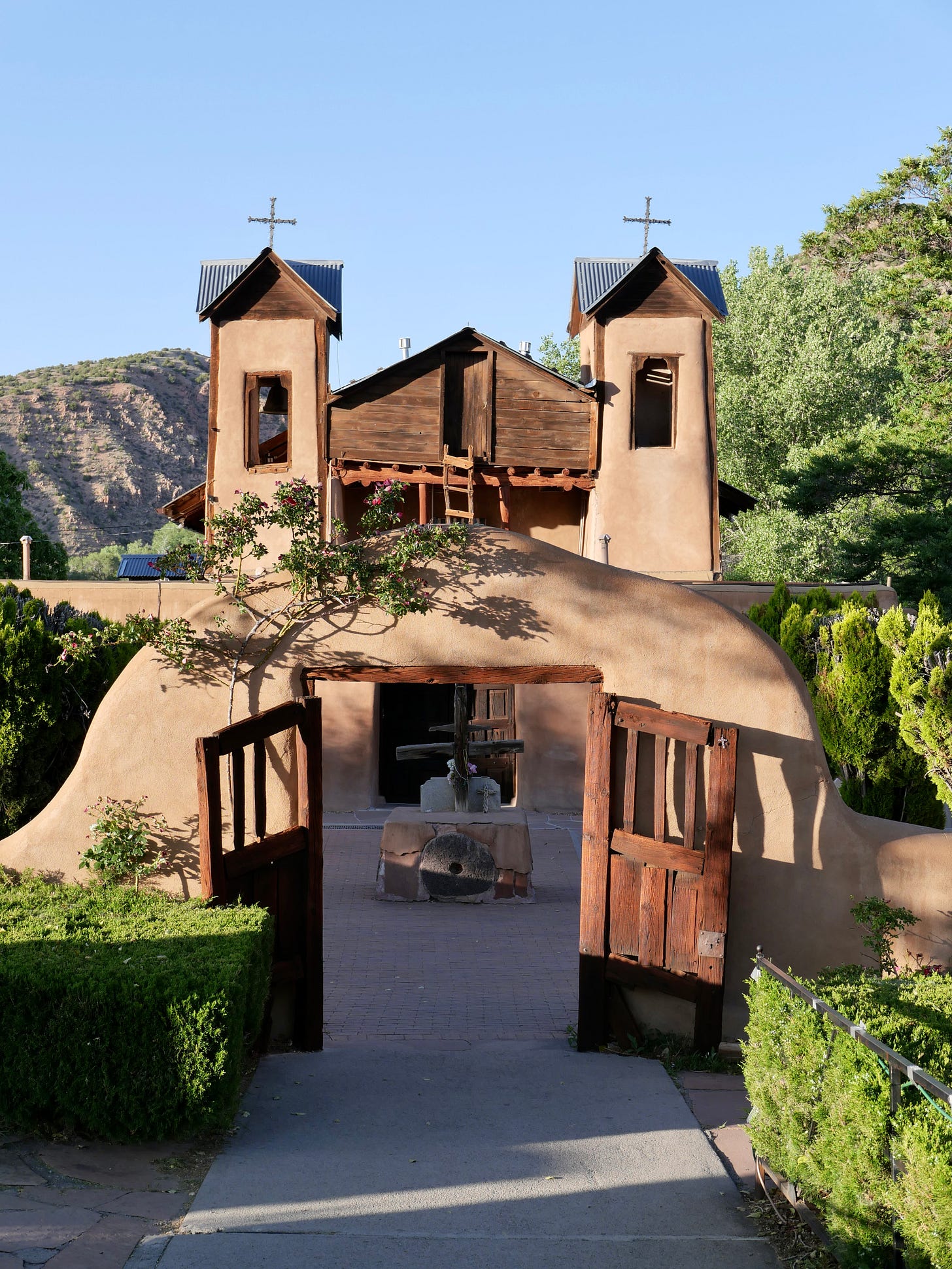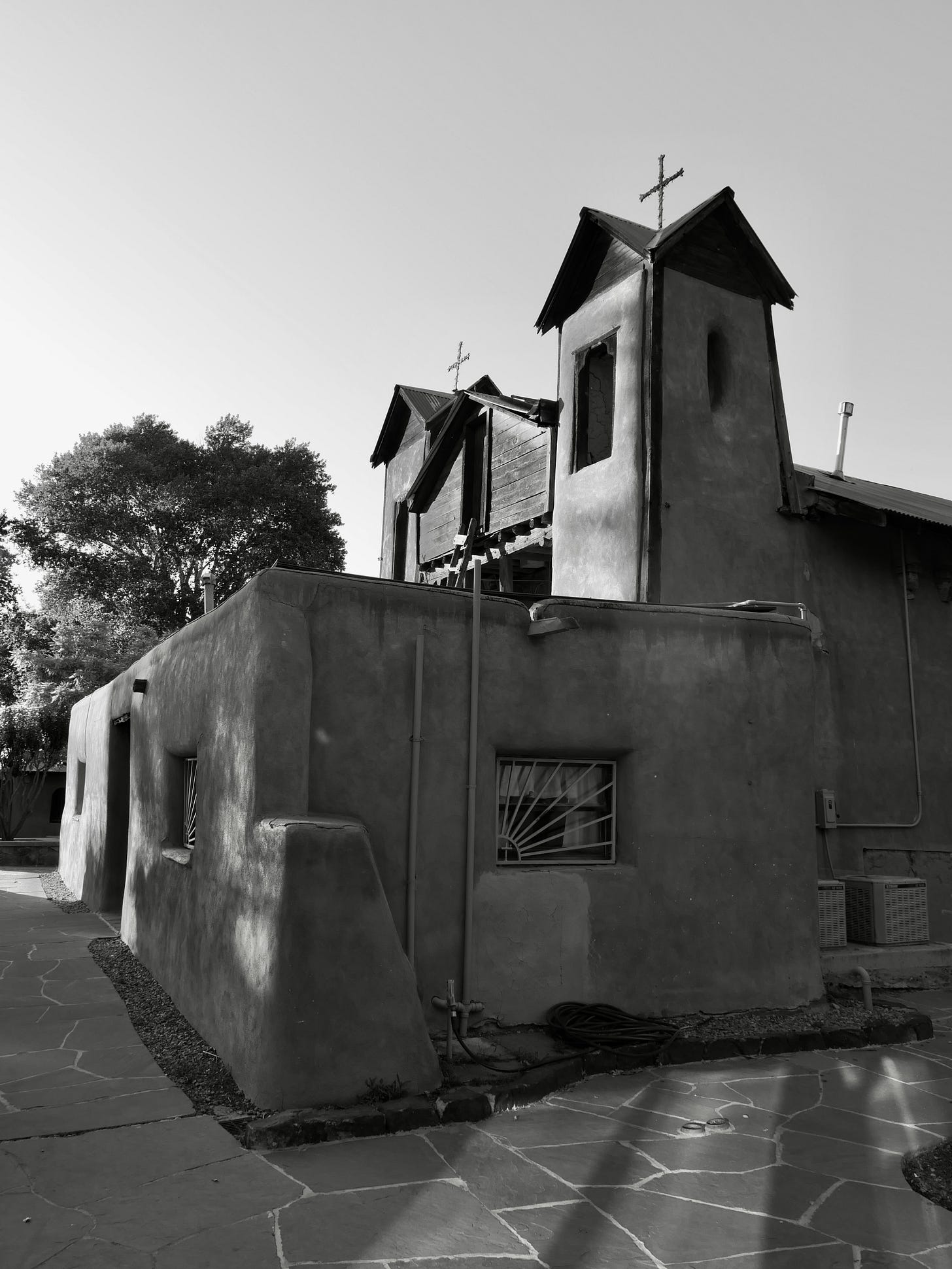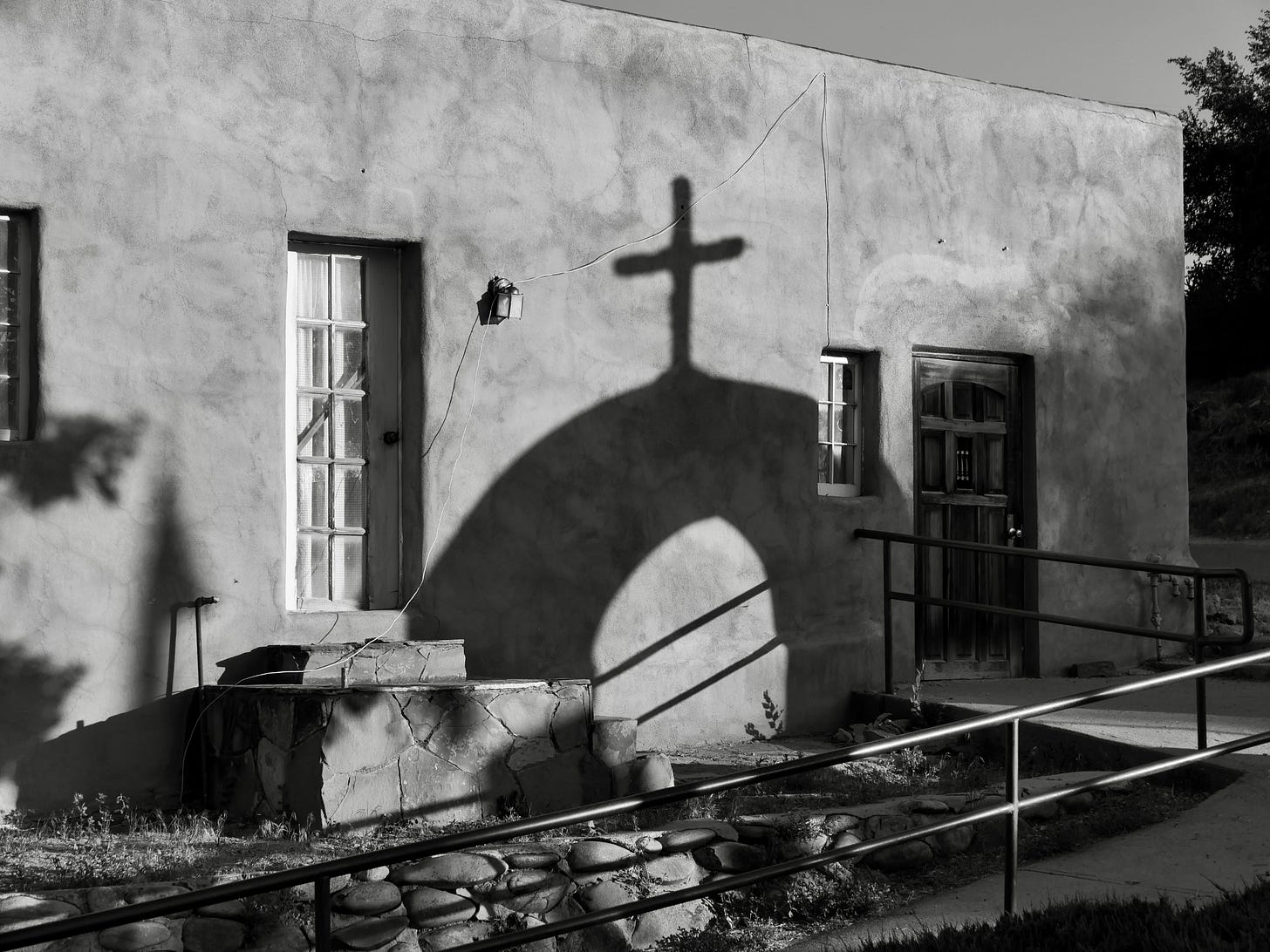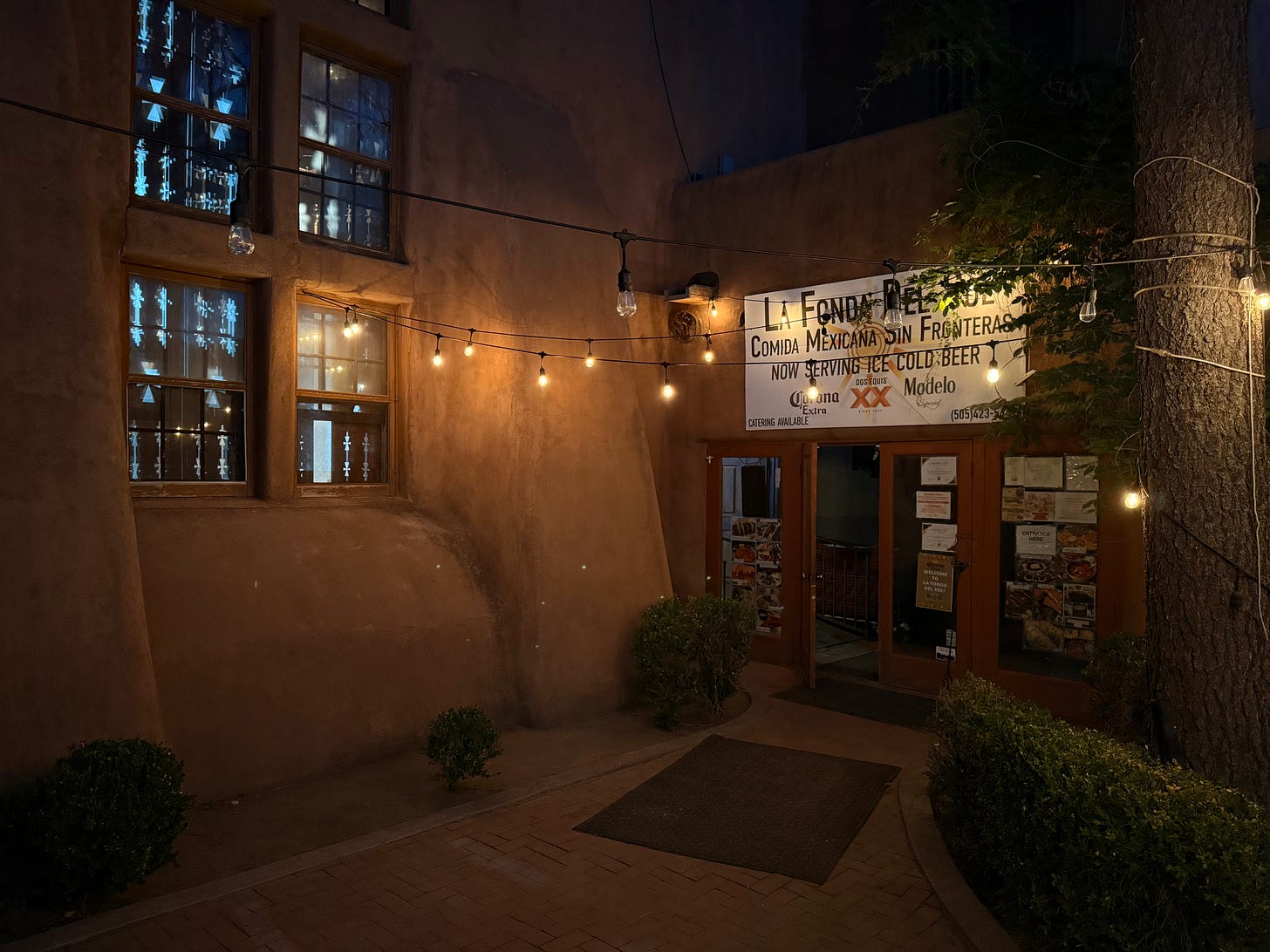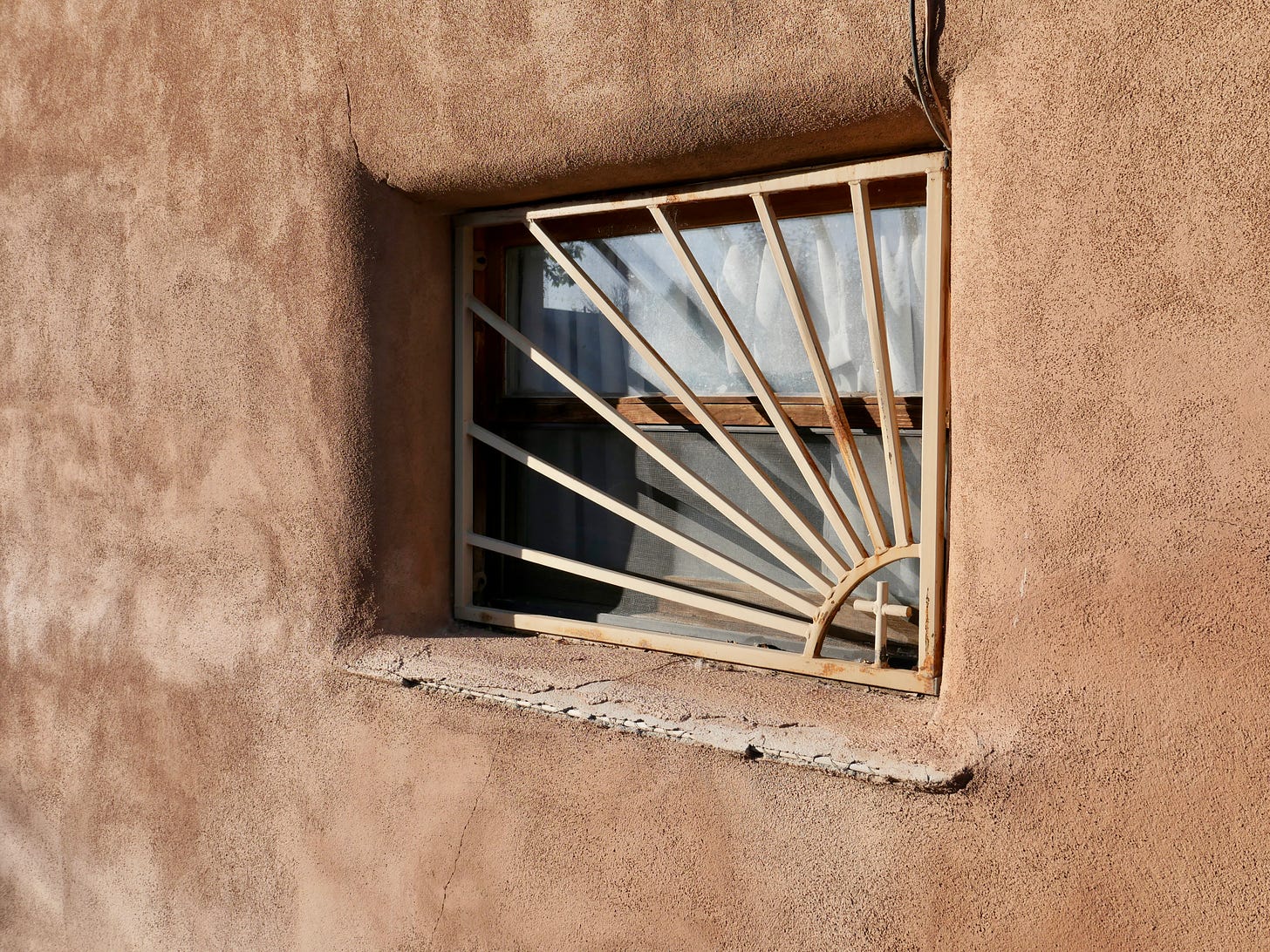Sometimes, the dust motes in the late afternoon sun invite exploration of more expansive landscapes and varied scales of view.
I realize that north of Santa Fe, one need not drive south. It is well within our reach to become curators of the less filtered or familiar by moving in another direction.
An early evening drive—with a visual documentary purpose—is a way to ward off the onset of subtle ennui, to avoid discovery of a wild bird now tamed and taught to sing on command.
Brian Wilson has just passed, and his words seem everywhere. “God only knows what I’d be without you,” lauded by Paul McCartney—apply differently on this drive. The “you” here is not a person. Instead, it is a more fundamental connection, one that exists on the walls and bookshelves, and in museum displays full of Georgia O’Keeffe, Tony Hillerman, Ansel Adams, and many more—something that explains why so many people end up gazing at and reinterpreting New Mexico.
And then, the impulse.
Rather than dance with the partially manufactured charm of the City Different, with walks past vigas and portales to rooftop bars where piñon is suddenly a favorite word, I drive the opposite way. Then, I turn right, and in a few moments, I immerse myself in the landscapes of Nambe Pueblo.
Even on the road to a housing cluster, the senses attune. It is not just the sunlight, but the way it falls and changes, and how, if not photographed now, the particular shades of rust, sienna, and crevice shadows will disappear.
Is it the act of going somewhere? No, it is the art of finding something.
Soon, the High Road to Taos descends to Chimayo with a gentle curve. The road—shown above—is empty, and I cut the engine. The only sounds are the wind and the murmurs of any approaching car, of which there are few. My walk to the middle of this road of pilgrimage frames the view.
Down the hill, on the legacy sideroad, the Sanctuary at dusk—unlike when I have photographed it before—stands quiet, serene, and somehow charms emotions to the surface as it reflects the evening sun. No matter the history or denomination of this well-known church, at this time of day, the experience transcends any dogma.
Then, in Española, after crossing the Rio Grande, the sanctity of Chimayo reweaves in uncurated delight. At first, the hostess suggests takeout as she does not know when the restaurant closes. Then a colleague intervenes, and when seated, the clock yields to the eclectic surroundings.
When I order something familiar from the laminated menu, the carne asada plate that emerges is entirely different than what I thought it would be. Not a steak, but a generous melange of tortillas, seasoned beans, a roasted chile, and shredded meat.
It is an evening of unscripted moments, varied from preconception, and all in all unforeseen. This impulsive drive north, then, is a spontaneous realignment, and part of my continued efforts to not only be in a place, but also part of it.
I asked a kind author friend—someone far more experienced with external and internal travels—to comment on my words.
I appreciate his affirmation:
You make me want to be there right now, though actually you make me feel as I'm right there already.


